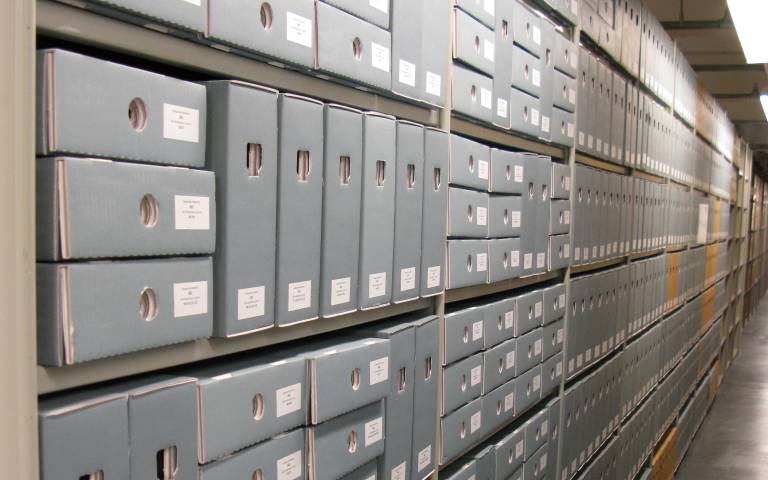Cristina Duran-Casablancas publishes on modelling to compare paper preservation measures
24 July 2020
SEAHA PhD student Cristina Duran-Casablancas, based at UCL Institute of Sustainable Heritage, has published research that compares the impact of preservation measures on paper collections using modelling.

SEAHA student Cristina Duran-Casablancas has published research on preservation management modelling in Studies in Conservation. Her paper compares the impact of two preservation measures, environmental conditions and deacidification, on the long-term preservation of paper collections using agent based simulation. Approaching paper collections in this way allowed Cristina and colleagues to simulate preservation management decisions in a more tailor-made manner, where characteristics of the collections and preservation treatments are modelled with a high level of detail.
Collections Demography and the Degradation of Paper
Cristina’s research builds on the Collections Demography project at UCL which explores the management of large heritage collections. As part of the project, a model was created that predicts the chemical degradation of paper over time, depending on the temperature, humidity of the environment, and the initial degree of polymerisation and acidity of paper (pH). The model was used to develop demographic curves for certain types of collections to compare management scenarios. Building on this, Cristina’s new research examines the impact of preservation measures on the lifetime of collections using agent based simulation (ABS).
Agent Based Simulation
Individual characteristics of objects and their unique combinations in heritage collections are often a key element that affects the rate of the degradation processes. When studying these, ABS presents some advantages compared to alternative simulation approaches, such as System Dynamics, as it allows researchers to capture this heterogeneity of collections, and the behaviour that follows individual characteristics such as degree of polymerisation and pH.
Cristina and colleagues conducted computational experiments on datasets generated to represent typical archival and library collections. What-if scenarios were simulated to study the impact of changing the storage conditions (temperature and relative humidity) compared to the deacidification treatment of (part of) the collection. By using ABS, Cristina was able to conduct simulations with a high level of detail. In addition, as the timespan of the treatment could be modified at any given timestep during the run, the researchers were able to show the effect of delaying the decision to start the treatment.
Storage Conditions vs Deacidification
One aspect of collections management the research explores is whether the positive effect of a small change in the storage environmental conditions could be achieved by deacidification, following different selection strategies. It found that, depending on the percentage of acidic papers within the collection, similar results could be achieved if the entire collection is deacidified or alternatively kept in a cold storage of 5°C and 40% RH. However, for acidic collections with a mean degree of polymerisation lower than 500, cold storage seems to be more effective than deacidification.
Cristina and colleagues also observed that collections with a mean degree of polymerisation higher than 800 will benefit from slightly lowering the temperature to 16oC and the relative humidity to 40%. However, to obtain the same level of effectiveness, it would require the deacidification of 45% of mixed collections to 70% of acidic collections.
Preservation Management Model
The model developed in this research is part of a larger preservation management model that includes the preservation and access of paper collections, as well as costs of different preservation options. Cristina’s research has shown that ABS has important features for the preservation part of the model. Future research will focus on the usability of ABS to model the use of the collections.
Links
- Read A Comparison of Preservation Management Strategies for Paper Collections
- Cristina Duran-Casablancas student profile
- Collections Demography project
Image: Repositories at the Amsterdam City Archives (© Stadsarchief Amsterdam).
 Close
Close

